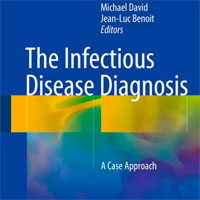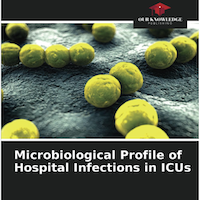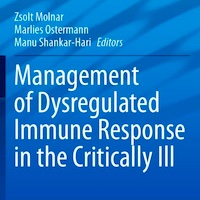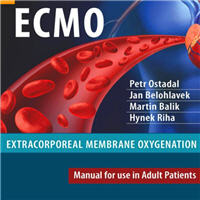Tag: infection
The Role of Rotational Thromboelastometry in Early Detection of the Hemostatic Derangements in Neonates with Systemic Candida Infection
Rotational thromboelastometry (ROTEM) parameters revealed a hypocoagulable profile in neonates during the early stages of SCI, which is also associated with disease severity. The results of this study highlight the need for... read more
72‐h Infusion of Prostacyclin in Mechanically Ventilated Patients with Pulmonary Infection and Endotheliopathy
Acute respiratory failure (ARF) is common in critically ill patients, and 50% of patients in intensive care units require mechanical ventilation. The COVID‐19 pandemic revealed that COVID‐19 infection induced ARF... read more
Early Antiviral Use and Supplemental Oxygen Decrease the Risk of Secondary Bacterial Infections
This nested case control study shows that early use of antiviral agents and non-invasive oxygen supplementation leads to decreased susceptibility to secondary bacterial infections. On the other hand, use of antibiotics... read more
Cardiac Damage in Patients Infected with Different COVID-19 Variants of Concern
Coronavirus Disease 2019 causes significant morbidity, and different variants of concern (VOCs) can impact organ systems differently. We conducted a single-center retrospective cohort analysis comparing biomarkers and... read more
Long-term Prevalence of PTSD Symptom in Family Members of Severe COVID-19 Patients
The prevalence of PTSD-related symptoms among family members of severely ill COVID-19 patients stayed high up to 18 months after the patients' ICU discharge. Some showed delayed onset of PTSD-related symptoms in the remote... read more
Predicting ICU Admission in COVID-19-Infected Pregnant Women Using Machine Learning
Routinely collected clinical and laboratory data of COVID-19-infected pregnant women may help recognize high-risk groups who are more liable for complications and more severe course or prognosis and require an ICU admission.... read more
Mini Bronchoalveolar Lavage vs. Endo-Tracheal Aspirate in Diagnosing Bacterial Pneumonia in ICU
This study supports the use of endotracheal aspirate (ETA) as a cost-effective and efficient alternative to mBAL for the diagnosis of pneumonia in intubated ICU patients, particularly in settings where resources are limited.... read more
Effect on Norepinephrine Administration Timing on Prognosis of Septic Shock Patients
Norepinephrine initiation ≤1 h is associated with lower 28-day mortality in patients with septic shock. Early norepinephrine administration is also associated with a shorter time to achieve MAP ≥65 mmHg, lower 24-h intravenous... read more
Sepsis: Clinical Diagnosis and Treatment
Sometimes our body's reaction to infection can result in damage to internal tissues and organs. Such a condition is referred to as sepsis. Some of the symptoms of sepsis are high fever, increased heart and breathing rate,... read more

An Optimal Antibiotic Selection Framework for Sepsis Patients Using AI
In this work we present OptAB, the first completely data-driven online-updateable antibiotic selection model based on Artificial Intelligence (AI) for Sepsis patients accounting for side-effects. OptAB performs an iterative... read more
Lymphocyte Count Trajectories Associated with Prognosis of Sepsis Patients
Three distinct lymphocyte trajectories were identified in sepsis patients using GBTM. Trajectory 3 was a strong predictor of 7-day and 28-day mortality, while Trajectory 1 was associated with early death. These findings... read more
The Infectious Disease Diagnosis: A Case Approach
This text uses cases to illustrate differential diagnoses of various infectious diseases. Unlike any other book on the market, this book is specifically designed for ease of use and can cater to a variety of medical professionals... read more

ARF Caused by Penicillium Marneffei Infection After Kidney Transplantation
Penicillium Marneffei (PM) infections often present with nonspecific clinical manifestations, and severe respiratory failure (ARF) after infection is particularly uncommon. This case report a patient who developed severe... read more
Risk Factors for Secondary Organizing Pneumonia and Acute Fibrinous and Organizing Pneumonia in Patients with COVID-19 Pneumonia
Based on our findings, we observed that age ≥50 years, diabetes mellitus, and severe hypoxemia on admission (SpO2 ... read more
Skin Decontamination to Prevent ICU Infections
Intensive care unit (ICU)-acquired infections can be serious complications of medical care of critically ill patients. Despite multiple tested and implemented preventive measures for such infections, their incidence is persistently... read more
Preventing VAP Non-Pharmacologically
In critically ill, intubated patients on intensive care unit (ICU), ventilator-associated pneumonia (VAP) is a significant complication contributing to substantial mortality, morbidity, and prolonged stays, which in turn... read more
Management of Refractory COPD
Chronic obstructive pulmonary disease (COPD) is a common condition with an estimated global prevalence of almost 12 percent in adults over age 30 years [1-3]. Prior to the onset of the COVID-19 (coronavirus disease 2019)... read more
Invasive Fungal Infections in Non-neutropenic Patients
Critically ill patients, particularly those with features of immunosuppression, are susceptible to invasive fungal infections (IFI), which pose significant diagnostic and therapeutic challenges. Candida and Aspergillus,... read more
Microbial Dynamics and Pulmonary Immune Responses in COVID-19 Secondary Bacterial Pneumonia
Secondary bacterial pneumonia (2°BP) is associated with significant morbidity following respiratory viral infection, yet remains incompletely understood. In a prospective cohort of 112 critically ill adults intubated... read more
Outcomes and inflammation changes in different types of immunocompromised patients with critically ill COVID-19 admitted to ICU
Critically ill COVID-19 patients admitted to the ICU exhibit distinct clinical outcomes based on their immunosuppression status, with cancer patients facing the highest mortality rate due to variations in inflammatory responses... read more
Microbiological Profile of Hospital Infections in ICUs
Hospital-acquired infections are a serious public health problem, leading to increased morbidity and mortality among patients admitted to intensive care units, complications related to health care, as well as longer hospital... read more

Management of Dysregulated Immune Response in the Critically Ill
This book, part of the European Society of Intensive Care Medicine (ESICM) textbook series, deals with dysregulated host response a relatively new term introduced by the Sepsis-3 definitions in 2016. In contrast to systemic... read more










